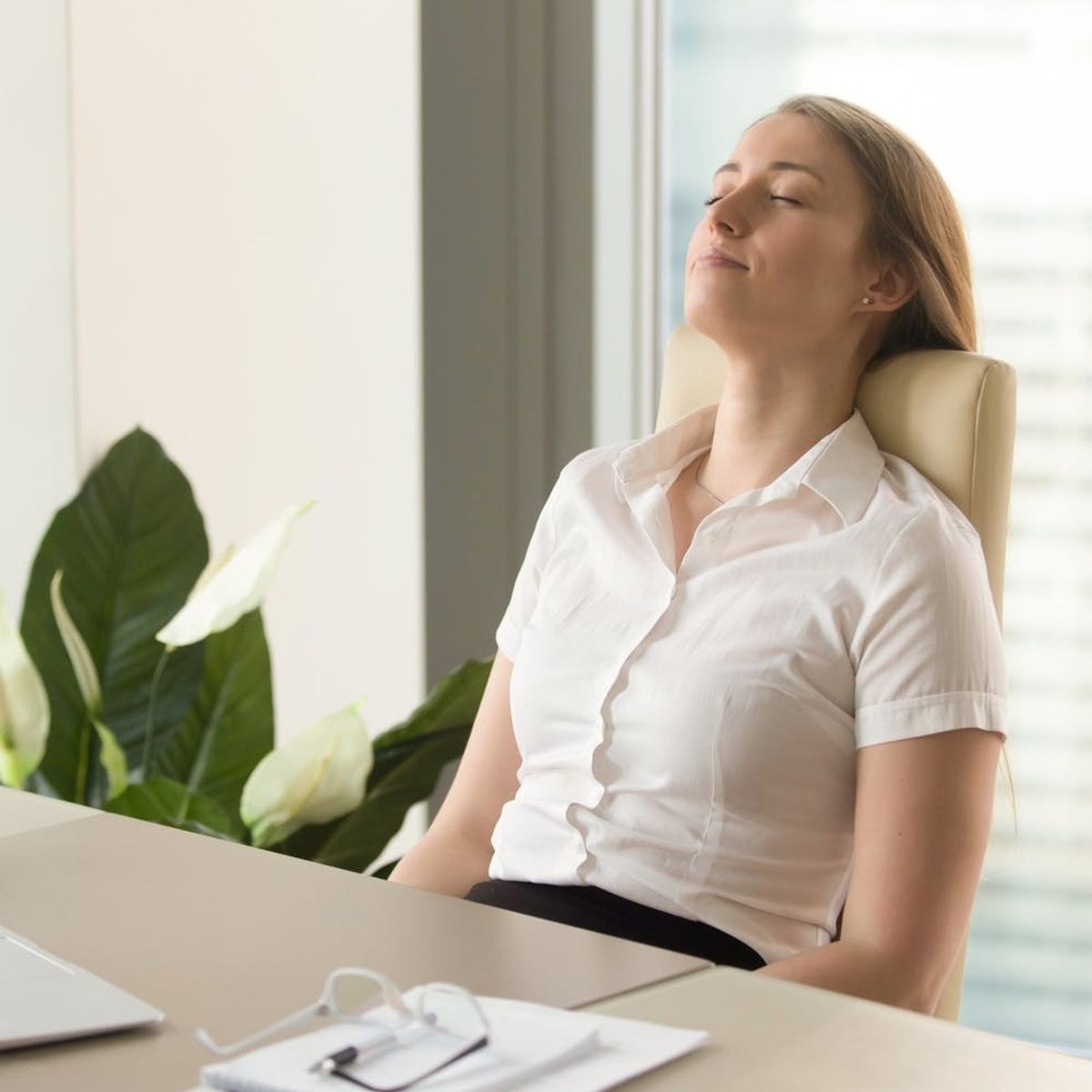Put stress in its place with these four simple breathing exercises.
4 Breathing Techniques That Could Be Better Than Xanax

You’re sitting in traffic, going nowhere while the minutes tick by, making you irretrievably late for a meeting you’re supposed to lead. You look at your schedule and want to run far away because it feels like you literally have a thousand things to do by tomorrow. All the while your anxiety level steadily creeps higher, and you begin to feel helpless to stop it. You wonder if you should reach for your emergency stash of Xanax. Sound familiar?

Before you break out the benzos, there’s another option to consider, because as it turns out, you may not actually be helpless against the onslaught of anxiety — and a simple technique may leave you feeling a whole lot better than prescription meds. Your first line of defense? Your breath. As elementary as it sounds, employing a few basic breathing techniques can have a major positive impact on reducing stress down to manageable levels. And here’s the really good news: Unlike medication, breathing exercises are free, have no side effects, and can be done anywhere and anytime.
If this isn’t the first time you’ve heard the mental health benefits of various breathing techniques touted, rest assured there’s good reason for the hype. Bringing awareness to our breath and slowing it down has been shown to calm the nervous system, increase alertness, and even boost the immune system.
What you might not know, however, is that there’s a key to using mindful breathing effectively: catching anxiety before it gets too high.
Therapist and mindfulness instructor Amy Burnside, LCSW, explains. “It’s important to catch your stress early and intervene with the breath at the first sign. If you wait too long and the stress gets too high, the breathing will be less effective and you may need more extreme coping mechanisms.” Burnside recommends monitoring stress and emotions on a scale from 0-10 (0 = no stress and 10 = highest stress possible). “Try to catch the stress growing before it reaches level 5,” she advises. “This will help your brain stay ‘online,’ allowing for rational thought.”
Here are four breathing techniques to try for taming anxiety before it gets out of control.
1. Basic Mindful Breathing: Think of mindful breathing as entry-level meditation — the mere act of focusing your awareness on your breath. In an undisturbed place (if possible), take a few moments and simply pay attention. Is your breathing ragged? Shallow? Deep? Notice the way the air feels when it enters your body through the nose, how it fills your lungs. As thoughts arise, acknowledge them and let them pass. The more you direct your thoughts toward your breath, the more you may find external stresses melting away.
2. Diaphragmatic Breathing: Most of us go through our days breathing by hastily “shrugging” the chest up and down. This choppy, harried inhale-exhale cycle is the opposite of calming. On the other hand, breathing that involves the diaphragm — the sheet-like muscle that divides the chest cavity from the abdominal cavity — has been shown to stimulate the vagus nerve, lowering fight-or-flight response. To breathe using the diaphragm, sit or lie down with one hand on your chest, the other on your belly. Intentionally direct the air from your inhale to fill your belly like a balloon, keeping your chest stable. On your exhale, slowly release the air out of your abdomen, pushing your belly button toward your spine.
3. “Loop” Breathing: Ready for the next level? Once you feel comfortable with diaphragmatic breathing, you may want to experiment with adding a bit of visualization to enhance effectiveness. In this exercise, use your mind’s eye to see your breath as it travels in a loop through your nose and down to your belly on your inhale, then up your back, around the top of your head, and back out your nose on your exhale. Congratulations! You’ve just mentally directed cleansing breath throughout your entire upper body.
4. 4-7-8 Breathing: In the midst of stress, if you ever feel like you can’t keep from holding your breath, this exercise is for you. 4-7-8 breathing, a technique originated by holistic health pioneer Dr. Andrew Weil, capitalizes on our tendency to hold our breath, turning it into a helpful tool. With your tongue resting behind your upper front teeth, breathe in to the count of four, hold the breath for a count of seven, then exhale for a count of eight. Dr. Weil describes this simple cycle as “a tranquilizer for the nervous system.”
If it’s possible anxiety could be reduced with a practice as innocuous and straightforward as breathing, isn’t it worth giving it a go? While Xanax and other sedative meds can certainly serve a purpose for handling acute anxiety, they do so at a cost: troublesome side effects, unpleasant withdrawal symptoms, potential for addiction, and decreased effectiveness over time. In the muck and mire of everyday stressors, if you can catch yourself before emotions run too high, a mere 10 minutes a day of breathing exercises could make all the difference you need to get back in control.
(As always, consult your physician before treating any mental health condition.)
What is your go-to way to reduce anxiety? Tweet us and let us know!
(Photo via Getty)

















